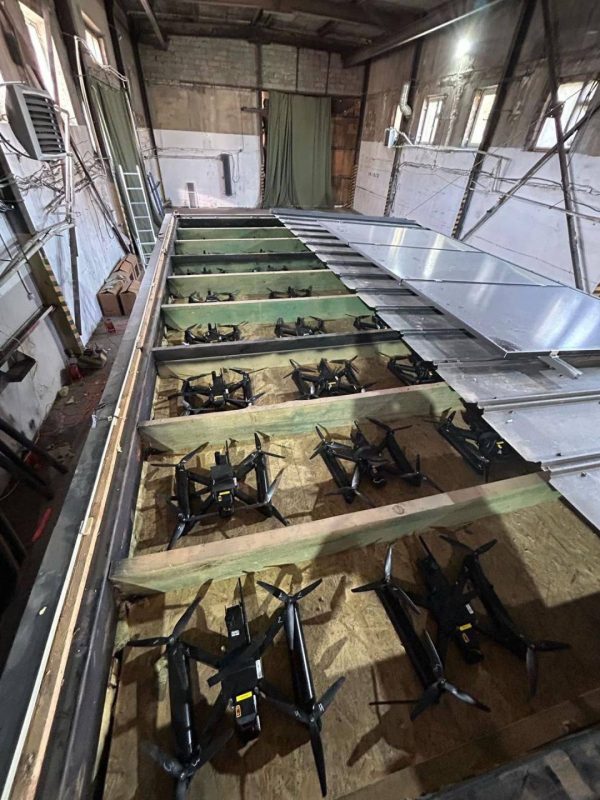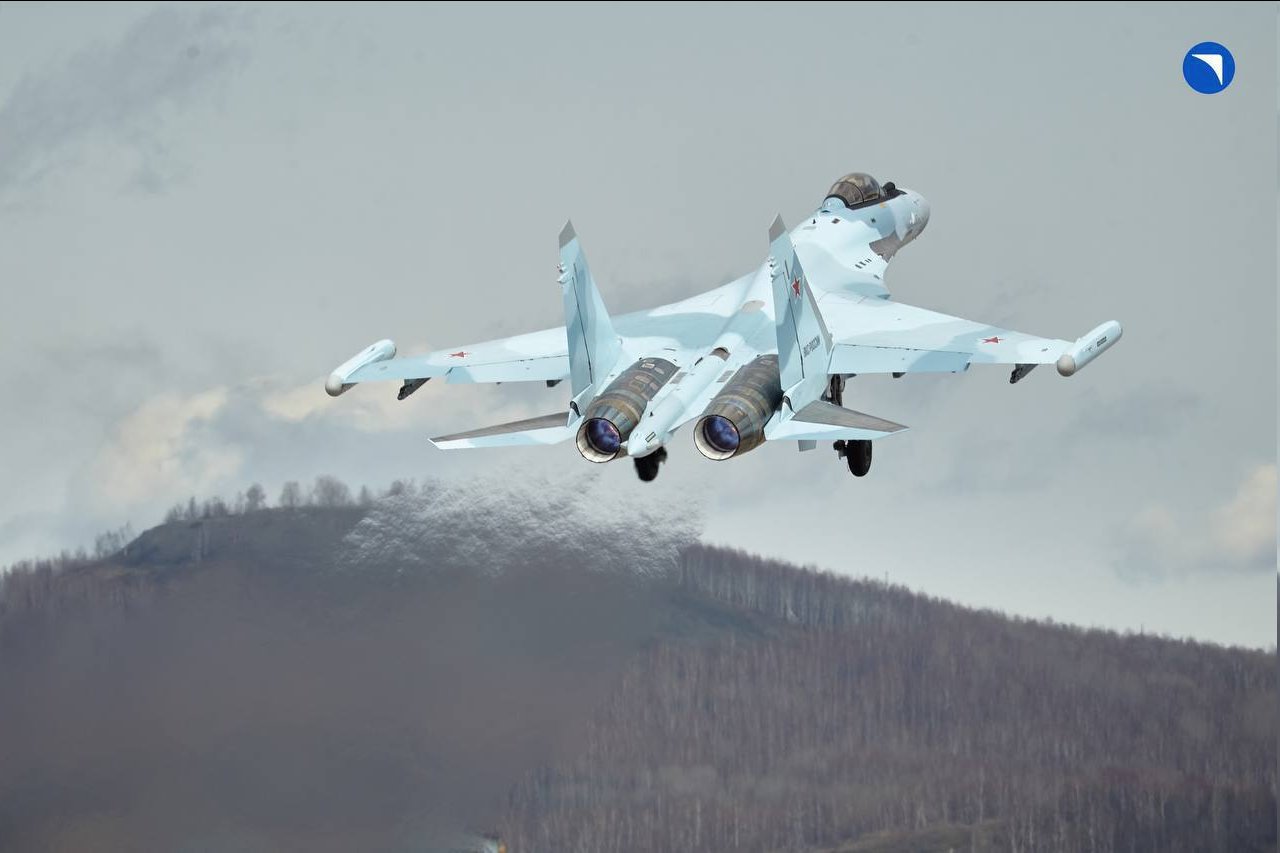Operation Spiderweb: Ukrainian FPV drones strike Russia’s bombers
Details are beginning to emerge of Operation Spiderweb, Ukraine’s daring wave of drone strikes against Russia’s strategic bomber fleet located at five airbases. Over the course of 18 months, the Security Service of Ukraine (SBU) infiltrated personnel into Russia as well as 117 FPV drones and sheds designed to hide them. The FPVs were hidden in the roofs of the sheds, which were mounted on trucks and driven close to the Russian airfields and parked. The roofs then opened and the drones were remotely flown to their targets, which were Russia’s large bomber aircraft like the Tu-95, Tu-160, and Tu-22.
The drones reportedly engaged aircraft at Olenya, Belaya, Dyagilevo, Ivanovo-Severny, and Voskresensk airbases and damaged 34% of Russia’s strategic bomber fleet, according to a post on President Zelenskyi’s Telegram account. Separate Ukrainian news outlets are claiming that 41 Russian aircraft have been damaged or destroyed. The available information indicates that Russia may have as many as 127 aircraft in its strategic bomber fleet, including 55 Tu-95MS and 55 Tu-22M3s, as well as 17 of the Tu-160s. If 41 have been damaged, this does equate to around 30% of the total.

Drones arranged in the roof of a shed for Operation Spiderweb. Credit: SBU
One account on Telegram, simply called Tracker, that appears to track flight activity at Russian airbases, claims that nine Tu-95MS, two Tu-22M3s, and an An-12 have been destroyed. This is supported by SAR imagery posted by an analyst on X.com, which shows all but the An-12.
“All the planes from the Engels-2 airbase have been taken into the air. I wonder why?” Tracker reported on the 1st June. Three hours later, those aircraft were still in the air, according to Tracker. Engels has come to house many Russian aircraft despite its proximity to Ukraine.
This will have impacted Russia’s ability to launch long-range cruise missiles against Ukraine’s cities and critical national infrastructure. Fewer planes will place more stress on the remaining undamaged fleet, most of which is decades old. It may also mean that Russia takes even more restrictive measures with its aircraft – moving them more often for instance – to protect them. At the very least, it may reduce the number of missiles that can be launched in a single strike.
The attacks were likely very successful because of the new modality; Ukraine has launched hundreds of long-range drones at Russian territory, striking oil processing facilities, factories, and other targets deep inside Russia. There is a correlation between the distance travelled and likelihood of success, according to analysis from the FrontIntelligence team. Targets within 100 – 150 km of Ukraine are often engaged successfully, but the further away the targets, the more often the drones are shot down, which means few have been as successful as Operation Spiderweb. In some examples, where strikes have found targets that were unprotected, they have achieved significant disruption, but as Russia has adapted, the impact of further strikes has been mitigated to some extent.
Notable examples include missile and drone strikes against Russia’s ammunition depots, like the Tikhoretsk strike in 2024, which is estimated to have destroyed 2,000 tonnes of ammunition. Others have focused on Russia’s defence industry, although it is more difficult to assess how effective those strikes are – Russia’s defence factories are often the size of a small town, covering very large areas with multiple different buildings.
The role of human intelligence
“The “office” of our operation on Russian territory was located directly next to FSB headquarters in one of their regions.”
Ukraine has developed an extensive intelligence gathering capability to support its strike operations. This includes SAR satellites from ICEYE, support from Ukraine’s western partners, and human intelligence inside Russia. Operation Spiderweb was no exception, “the ‘office’ of our operation on Russian territory was located directly next to FSB headquarters in one of their regions,” Zelensky said on Telegram. Adding that “the people who assisted us were withdrawn from Russian territory before the operation, they are now safe,” indicating that either Ukrainian intelligence operatives were active inside Russia for some time, or the SBU was able to cultivate its own network of Russian collaborators.
It is worth noting, however, that intelligence agencies on both sides of the war use human assets on the ground to improve their long-range strikes. The SBU’s own website features press announcements of four separate cells that were conducting intelligence in Ukraine for Russia’s FSB. This includes taking photos of Ukrainian positions and likely air defences in Kyiv, as well as providing reports on the frequency of flights from military airfields, the SBU states. In all cases, the operatives were Ukrainians recruited via Telegram in exchange for money, and it seems that FSB operatives were working to build cells remotely that could help resource their strategic targeting and improve the accuracy and impact of long-range air strikes.
This is unlikely to provide a quick route to target identification, as the details of Operation Spiderweb show – it was 18 months in the making. However, these kinds of operations can provide something of a strategic shock by exploiting a vulnerability or network that is able to remain hidden. Russia is known to exploit Telegram and other messenger apps to locate and communicate with potentially willing collaborators, or others who simply do not understand what they are doing. It is likely that similar attention is already directed towards western bases, if only for gathering information at this stage.
Calibre comment
There are a number of elements and observations to draw from Operation Spiderweb, but the most surprising is that three years into the war, Russia appears to have failed to take even basic measures to protect its airfields. The VKS has learnt some lessons and goes to great lengths to move its aircraft around so that they spend less time within striking distance of the frontlines. And, some of the aircraft appear to have been situated in berms, which could reduce the impact of long-range drone strikes. However, it is rare to see the aircraft within any kind of shelter or under netting, which could have mitigated the effects of Operation Spiderweb for relatively low cost. It is also not the first time that Russia’s strategic bomber fleet has been engaged whilst on the ground, and yet a determined and capable response to protect them has not emerged.
Given the replicability of Ukraine’s operation, it would certainly be advisable for western forces to ensure that they have suitable shelters and equipment to protect their own aircraft whilst not in flight. This applies to operations abroad, too. Russia’s airbase in Syria was repeatedly attacked by bomber and one-way attack drones, despite having reasonably effective air defence and electronic warfare systems on site. It stands to reason that NATO forces can expect their airfields and airbases to be attacked even in a lower intensity conflict and should make the simple preparations needed to protect their aircraft.
By Sam Cranny-Evans, 2nd June, 2025.

Sign Up for Updates!
Get insider news, tips, and updates. No spam, just the good stuff!






